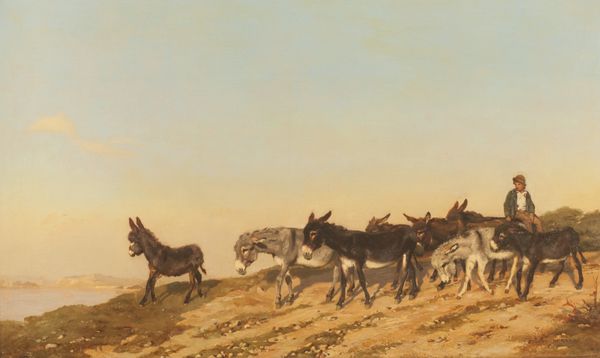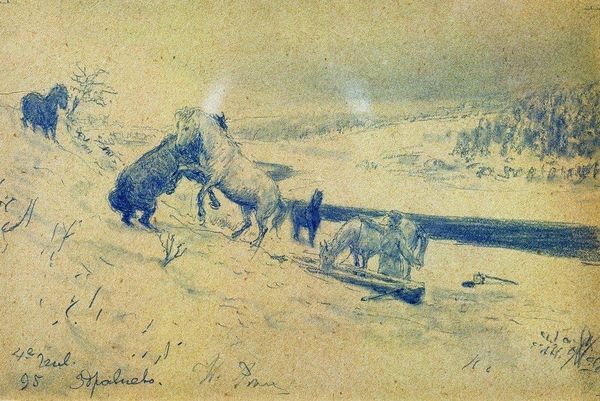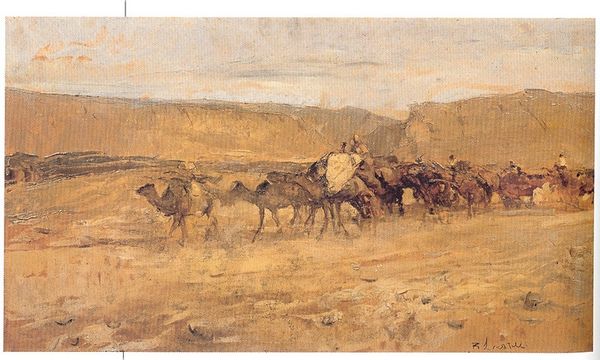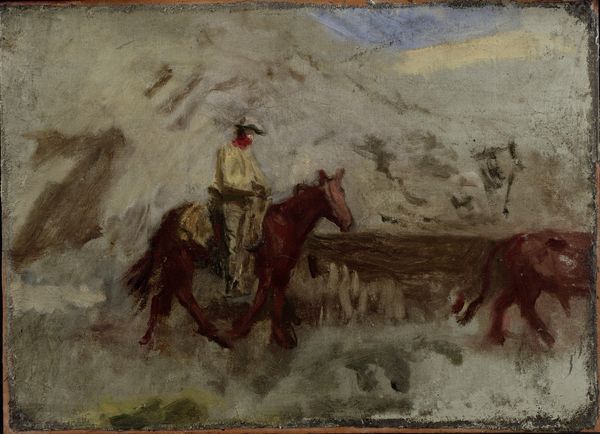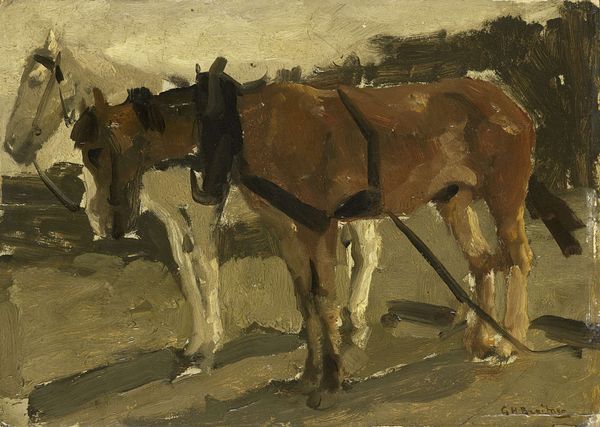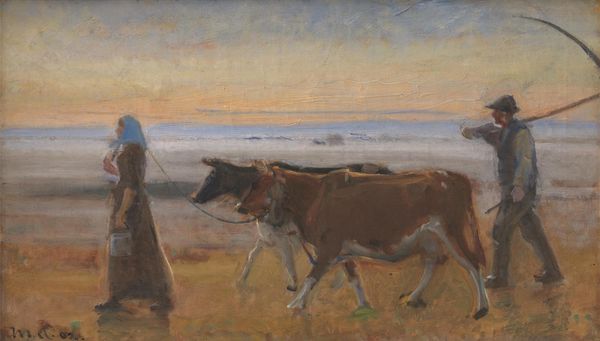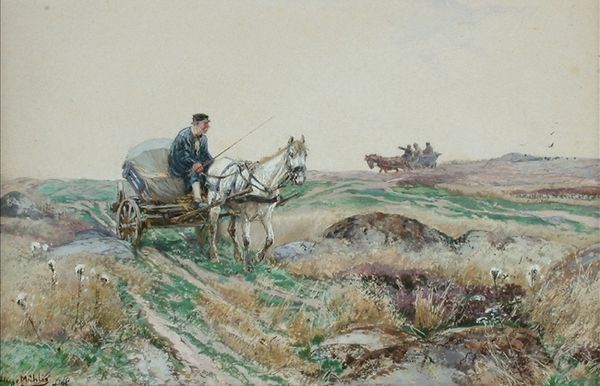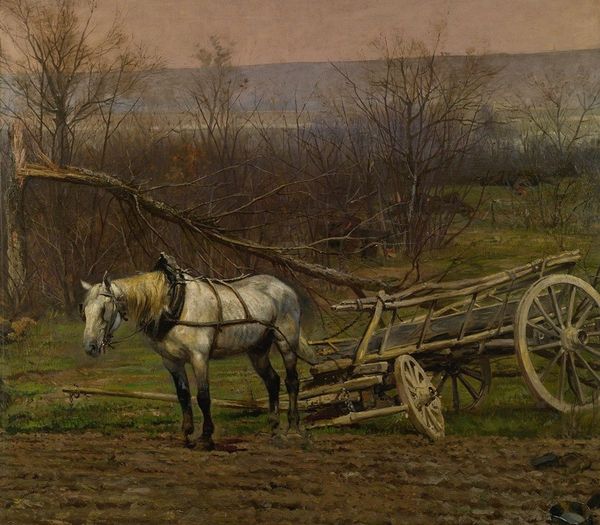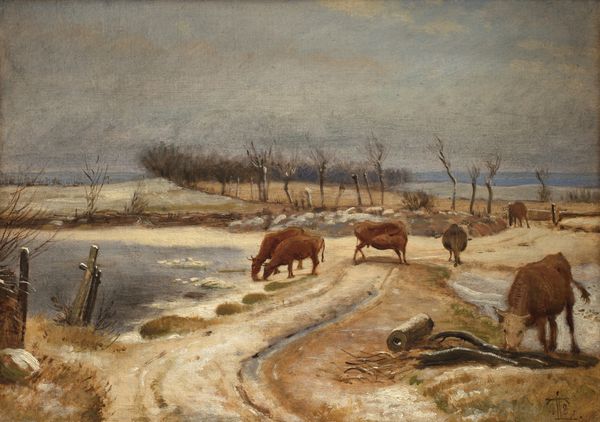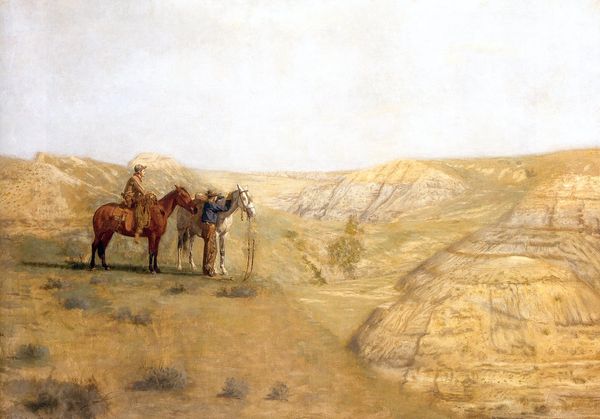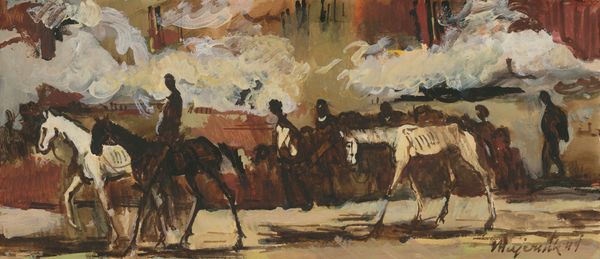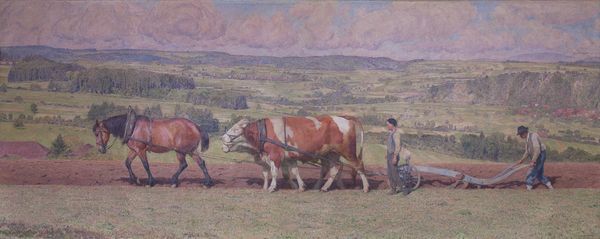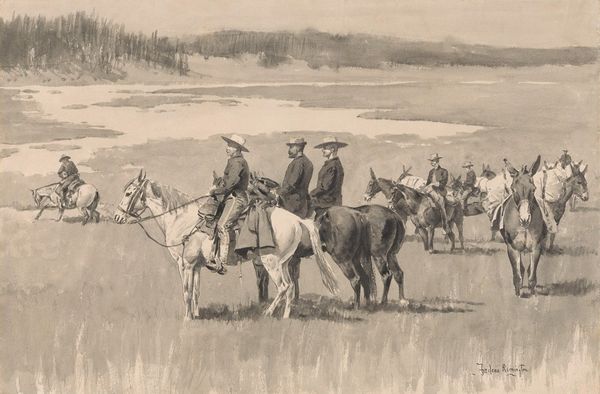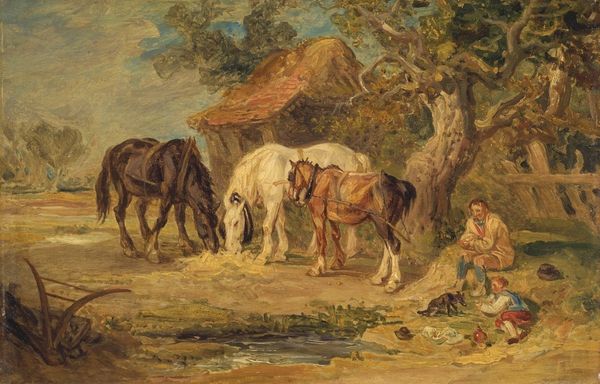
Copyright: Public domain
Curator: This is "Winter" by Károly Ferenczy, created in 1902. The artist uses charcoal in a style that nods to both realism and impressionism to capture the somber scene. Editor: My immediate impression is the starkness of it. The charcoal gives it a grainy, almost blurry quality, like looking at a memory through a snowstorm. It conveys the harshness and isolation of winter labor. Curator: I agree, the piece evokes that feeling of isolation. It compels me to think about the labor depicted, to examine its historical context. Working in such conditions at the turn of the century meant something entirely different than what we might assume today. This speaks to economic realities, to the relationship between humans, animals, and nature within a particular sociopolitical structure. Editor: Absolutely, and looking at the raw materials, the charcoal itself... it’s a product of burnt wood, of transforming one natural resource into another to then represent more labor. The material’s transformation mirrors the laborious processes depicted in the scene itself. Curator: Yes, the landscape, style and title reinforce this sense of harsh realities. Winter brings its own set of constraints on the working class and in this landscape, we must acknowledge both the humanity and environmental conditions impacting this man. Where are his resources? Editor: It also touches on the connection between people and animals, how working animals like these horses are vital to resource extraction, as well as personal travel. The blurred effect that comes from using charcoal suggests there could have been movement and coldness represented in this depiction of "Winter" and how that affected the quality of work accomplished in this particular industry and the other labors required. Curator: I agree; reflecting on its process, medium, and sociohistorical framework, "Winter" allows us to contemplate work, labor, and hardship across lines of race, class, and gender. It's about human and animal bodies weathering both natural forces and social forces. Editor: And looking closer, it really drives home the everyday nature of these lives and labours that are largely hidden from our society, asking important questions about materials, work, social context and our collective landscape.
Comments
No comments
Be the first to comment and join the conversation on the ultimate creative platform.
